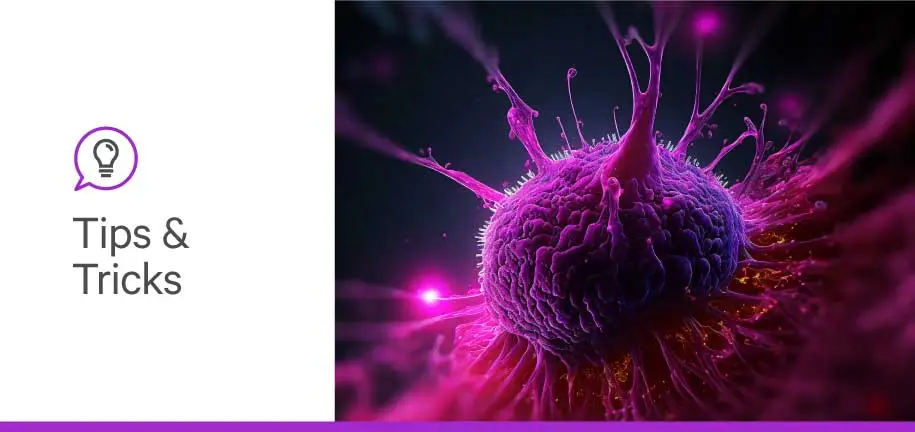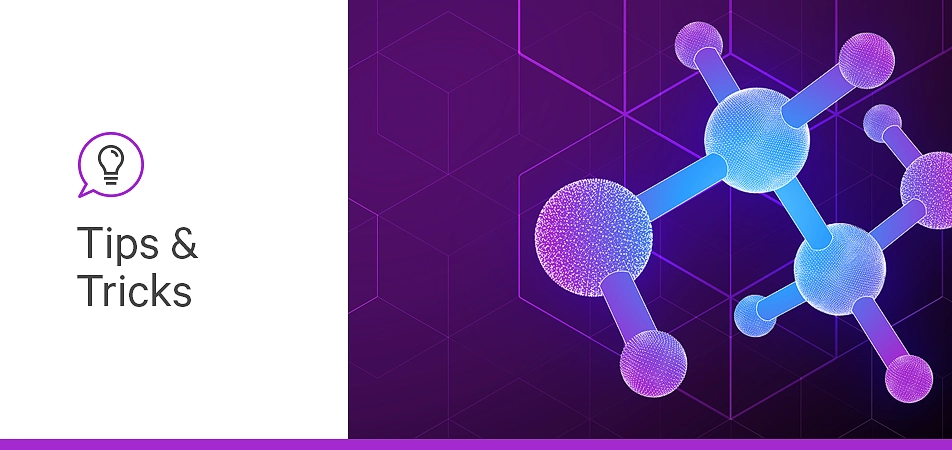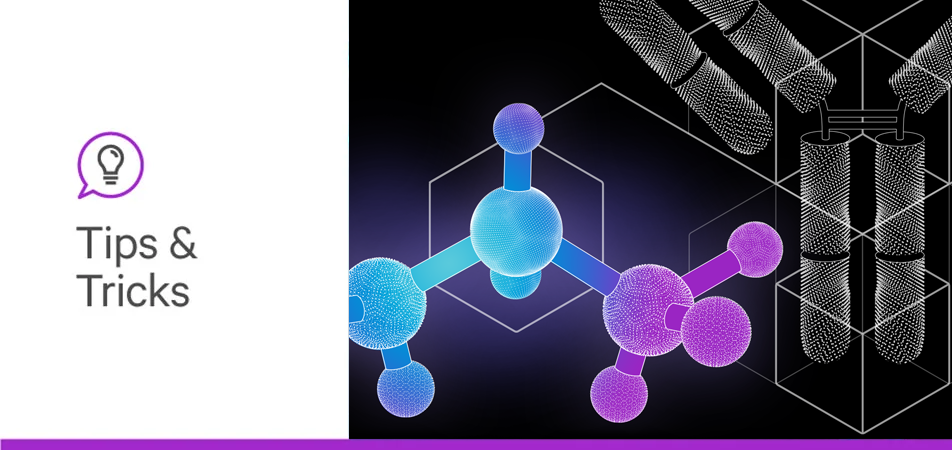

We often associate tumors with the term cancer cells, but that is an incomplete statement to describe the complexity of tumors. In fact, the tumor site is comprised of different cell types accompanied by growth factors, vessels, and the extracellular matrix (ECM). These components cooperate flawlessly to create a tumor microenvironment (TME) with distinct physical and chemical features that promote survival, adaptability, and migration of cancer cells. Therefore, we must consider a tumor as a dynamic machinery rather than a static congregation of cancer cells. This paradigm shift will be more helpful in understanding the disease mechanisms to unlock novel treatments
There is substantial research pointing to the impact of protein glycosylation on various stages and aspects of all cancers. Evidence strongly suggests that cancer-associated glycans are heavily associated with nutrient supply, immune evasion, and metastasis. The missing piece of the puzzle was how the glycoproteome received cues to alter its profile to promote tumor survival and progression. It turns out that there is a continuous crosstalk between the tumor microenvironment components and the tumor glycome to tweak glycosylation pathways in favor of the tumor.
The tumor microenvironment is a diverse hub of cells working synergistically to grant various characteristics to the tumor.
A tumor microenvironment harbors immune cells working in contradictory ways. Whether the immune cells exhibit pro- or anti-tumorigenic responses depends on the type of tumor and the malignant phenotype of cancer, among many other factors. Similar to the rest of the body, the tumor microenvironment contains both adaptive and innate immune cells.
Adaptive immune cells, such as T cells, B cells, and natural killer cells, orchestrate attacks based on information gained from previous pathogenic encounters. While some adaptive immune cell types work to produce anti-tumor antibodies or suppress angiogenesis, others counteract anti-tumorigenic activity and help maintain the integrity of the tumor microenvironment through the secretion of growth factors or cytokines.
The tumor microenvironment also boasts non-specific innate immune cells, such as macrophages, neutrophils, and dendritic cells. Although they partake in the acute immune response to pathogenic attacks in a healthy body, their presence in the tumor is often associated with poor prognosis. For example, malignant tumors are often abundant in M2-type macrophages around blood vessels to secrete vascular endothelial growth factors and form new blood vessels.
While neutrophils can induce inflammation and cytotoxicity in tumor cells in the early stages of the tumor, they could support angiogenesis and binding to the extracellular matrix, which encourages progression and invasion.
Stromal cells are involved in forming a communication web between the tumor microenvironment and surrounding tissue to advance tumor progression. These include endothelial cells, fibroblasts, adipocytes, and stellate cells.
Endothelial cells are crucial to the microenvironment for delivering nutrients and oxygen, especially when diffusion becomes inadequate for resource supply and metabolic waste management. They also contribute to cancer cell migration and metastasis.
Fibroblasts in the tumor microenvironment differentiate from healthy tissue fibroblasts involved in wound healing. This allows them to produce ECM components, cytokines, and growth factors to facilitate malignant phenotype, immune evasion, and metastasis.
Adipocytes provide the energy necessary for tumor-associated metabolic pathways by creating free fatty acids for cancer cell uptake.
The ECM contains non-cellular components, such as collagen, fibronectin, elastin, and laminin, which form a protective layer for the cancer cells while promoting dissemination. They are often considered one of the main setbacks in drug delivery because of their impenetrable structures.
Exosomes mediate the communication between cancer cells and stromal cells. One can think of them as the messengers delivering news of unfavorable conditions (e.g., hypoxia and acidity) to the cellular components of the tumor microenvironment.
The plethora of cell types in the tumor microenvironment often use surface proteins to cooperate. As we have covered in multiple blog posts, glycans are at the forefront of this machinery.
Decades of research uncovered the role of glycans in altering the ECM structure and cell surface composition, establishing them as primary hallmarks of cancer pathogenesis. The investigation of glycosaminoglycans (GAGs) and glycan-binding proteins revealed that immune evasion of cancer was glycan-dependent (1). For example, hyaluronic acid (HA) accumulation is indicative of poor prognosis in prostate, lung, and bladder cancer, as HA was shown to trigger several pro-tumorigenic mechanisms, such as the differentiation of M1 macrophages into immunosuppressive M2 type (2). Aberrant glycosylation of proteins is another indicator of poor prognosis, influencing the interactions between cancer cells and the immune cells and ECM (3).
The most noteworthy example is the sialic acid residue, an abundance of which is attributed to immune evasion. The tumor cells in many types, especially breast cancer, show upregulation of sialyltransferases that truncate and terminate glycan chains with sialic acid. Various mechanisms have been proposed related to the role of sialylation in cancer cell-TME interactions. One suggestion is that the negatively-charged sialoglycans shield tumor cells from immune recognition. It has also been shown that heavily sialylated glycans can attach to sialic acid-binding immunoglobulin-like lectins (siglecs), which helps overcome immune checkpoints. Wall et al. have demonstrated that sialic acid-siglec interactions resulted in the dampening of T cell activation, as well as reduction of cytotoxic NK cell activity and phagocytosis (4).
Sialic acid is not the only hallmark of malignancy in the tumor microenvironment. A recently published study by Ferreira et al. looked at aberrant N-glycosylation. Overexpression of N-acetylglucosaminyltransferase (MGAT) and the subsequent β1,6‐GlcNAc branched N‐glycan formation were significantly correlated with growth factor stabilization, increased nutrient supply, cell-matrix interactions, and metastasis. Indeed, cancer subtypes with a prominent migratory phenotype exhibited an abundance of MGAT5 and associated N-glycan structures (5).
The efficiency of strategies targeting cancer-associated proteins or immune checkpoints is limited to a subset of cancers due to the diverse tumor microenvironment mechanisms driven by altered glycosylation. Therefore, targeting glycosylation networks and pathways involving tumor-associated glycans can contribute to patient stratification in drug-resistant cancer subtypes.
The targeting strategies in cancer glycobiology can be divided into a few main groups.
One branch focuses on targeting glycosyltransferases to modulate tumor-promoting glycosylation. In particular, the role of excessive sialylation (6) and fucosylation (7) in tumor resistance and malignancy has been tackled, and inhibiting relevant enzymes improved the efficacy of chemotherapeutic agents that targeted cancer-associated signaling. The insight gained from these studies can help researchers invent combinatorial therapies targeting cancerous signaling and glycosylation pathways.
Another strategy is interfering with the glycan-lectin interactions linked to the tumor-promoting microenvironment. Blocking galectins and siglecs from binding tumor-associated glycans could augment immune response and increase the cytotoxic effects of drugs. In addition, antibodies or inhibitors can be used to reverse aberrant glycosylation to reduce the affinity of lectins to surface glycans. For example, administrating an anticancer drug conjugated to sialidase can trigger desialylation of the glycans in tumors, hampering their recognition by siglecs (8).
On the other hand, antibody-based treatments have been delivering increasingly promising results. Tumor-associated glycan neoantigens are ideal candidates for targeting, as they are often unique to the tumor. Monoclonal antibodies can exploit neoantigens to induce the desired immune response and drive phagocytosis and cancer cell death. Furthermore, anti-glycan antibodies can be repurposed to improve targeted delivery and cellular uptake of cytotoxic drugs to cancer cells. There are currently 9 antibody-drug conjugates approved by the FDA (9).
Nanoparticles have long been investigated in biomedical research for their targeted delivery capacities as well as controlled drug release and the ability to permeate biological barriers. Current efforts in glycobiology aim to integrate nanotechnology and glycan-based therapeutics to maximize efficacy and eliminate off-target cytotoxicity. By decorating nanoparticles conjugated to highly cytotoxic chemotherapeutic agents with anti-glycan antigens, one can increase the targeting efficiency of nanoparticles. A similar strategy can be applied to anticancer vaccines, where a tumor-associated immunogen and an immune adjuvant for enhancing the immune response can be encapsulated in functional nanoparticles. A number of studies demonstrated the synergistic effects of MUC1 glycopeptide and immune adjuvants linked to gold-based nanoparticles (10,11).
While the scope of glycan-based anticancer therapies keeps expanding, it is important to keep the hindering effects of the tumor microenvironment in mind. Various components at the tumor site work to optimize the chances of tumor survival through immune escape, nutrient supply, angiogenesis, and metastasis. Therefore, glycobiology must continue to investigate TME-specific glycans to develop multifaceted therapies that not only exert the desired cytotoxicity but also extinguish the glycan machinery that shields the tumor from the effects of anticancer therapies.
Our website is home to various resources covering glycan profiling and quantification in cancer. You can refer to our Glycobiology Cancer ebook for the fundamentals of glycan detection techniques related to cancer. In addition, the SpeakEasy blog offers further insight into glycobiology in cancer through practical tips for glycan detection methods, as well as publication highlights demonstrating the impact of lectins as detection agents.





Stay in the Loop. Join Our Online Community
Products
Ordering
About Us
Application
Resources

©Vector Laboratories, Inc. 2025 All Rights Reserved.
To provide the best experiences, we use technologies like cookies to store and/or access device information. Consenting to these technologies will allow us to process data such as browsing behavior or unique IDs on this site. Not consenting or withdrawing consent, may adversely affect certain features and functions. Privacy Statement